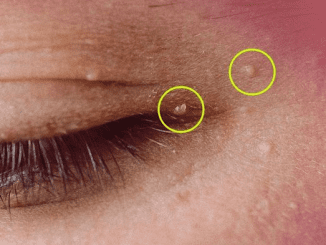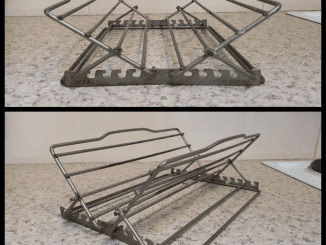Ready to dive into a quick brain teaser? Picture this: four glasses filled to the same visible level with water. In each glass, there’s a different object submerged—a baseball, an eraser, a wristwatch, and a paper clip. At first glance, it might seem like all the glasses contain the same amount of water, but looks can be deceiving! Here’s the question: which glass has more water than the others?
This challenge is all about looking beyond appearances and thinking critically. Let’s break it down, step-by-step, to solve the mystery!

Common Pitfalls When Solving This Puzzle
Before jumping to the answer, let’s explore some common mistakes that people make when solving puzzles like this:
- Ignoring the Object’s Volume: Many people assume that the visible water levels mean each glass contains an equal amount of water. This assumption overlooks the fact that each object takes up space, which displaces some of the water.
- Focusing Only on Water Levels: People often focus solely on the water’s surface level, not the object submerged within. Remember, each object has a different volume, so it displaces a different amount of water, affecting the actual quantity left in the glass.
- Overlooking Density and Size: The size and density of the objects impact how much water is displaced. A larger or denser object takes up more space and pushes out more water. So, in reality, the glass with the largest object contains the least actual water.
Now that we’ve covered some of the common mistakes, let’s analyze the puzzle in detail and find out which glass holds the most water.
Step-by-Step Guide to Solving the Puzzle
To solve this puzzle, we need to think about how much water each object displaces and how much water remains in each glass.
Step 1: Examine the Objects in Each Glass
Each glass contains one of the following objects: a baseball, an eraser, a wristwatch, and a paper clip. These objects differ in size, shape, and density, which affects how much water they displace. The larger the object, the more water it pushes out, leaving less water in the glass.
Step 2: Understand Water Displacement
When an object is submerged in water, it pushes out—or displaces—a volume of water equal to its own volume. Larger objects, therefore, displace more water, meaning there is less actual water remaining in the glass. Conversely, smaller objects take up less space, so they displace less water and leave more water in the glass.
Step 3: Identify the Smallest Object
In this puzzle, the objects range in size, with the paper clip being the smallest. The small size of the paper clip means it takes up minimal space and displaces only a tiny amount of water. By comparison, the baseball is much larger and displaces a significant volume of water, meaning there’s less water left in the glass.
Step 4: Deduce the Answer
Because the paper clip is the smallest object, it displaces the least amount of water. This means that the glass with the paper clip contains the most actual water compared to the other glasses. When you remove each object, the water level will drop according to the volume of the object. The glass with the paper clip will experience the smallest drop in water level, indicating that it contains more water than the others.
The Answer: The Glass with the Paper Clip Has the Most Water
The correct answer is the fourth glass, which holds the paper clip. Even though all the glasses appear to be filled to the same level, the actual volume of water varies depending on the size of the submerged object. Since the paper clip takes up minimal space, it leaves more water in the glass than the other, larger objects.

Why This Puzzle Boosts Critical Thinking Skills
This brain teaser highlights the importance of examining details and considering factors that may not be immediately obvious. It’s a great exercise for developing problem-solving skills and encouraging a more analytical approach to challenges. By breaking down each step and considering the science of water displacement, you can find the answer that might not be immediately apparent
Challenge Your Friends and Keep Your Mind Sharp
If you enjoyed this brain teaser, why not challenge your friends to solve it too? It’s a fun way to encourage critical thinking, and it can be fascinating to see the different approaches people take. Plus, puzzles like this one are a fantastic way to exercise your brain, enhance logical reasoning, and improve your observation skills.
The more you tackle these kinds of puzzles, the sharper your mind will become. And the next time you encounter a tricky question, you’ll be ready to approach it with confidence. So, share this puzzle, keep practicing, and continue expanding your problem-solving abilities. Happy puzzling!


